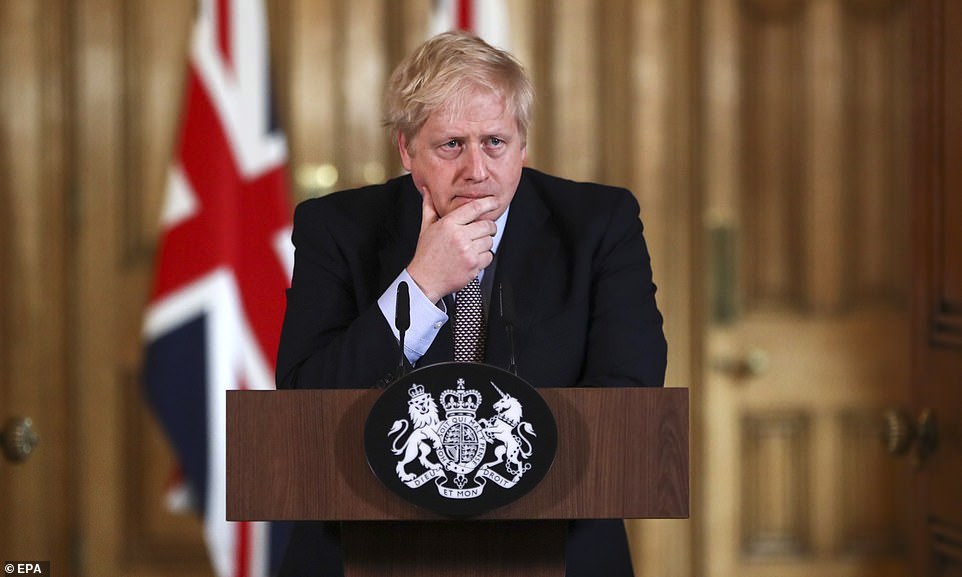Amid an overwhelming international flood of news emerging from capitals of the world’s biggest powers like Paris, Berlin, Washington and Moscow as well as from capitals of the global south, all announcing nation-wide lockdowns and declaring emergency in the fight against coronavirus, the UK is till the moment sticking to its controversial response to the crisis known as the “herd immunity approach”. It’s necessary, however, to note that Scotland and Wales don’t follow that approach stringently having moved today to closing schools while England still has them open. The “herd immunity” approach exhibits a more relaxed response to the crisis where there is no severely restrictive measure like shutting down schools, workplaces, prohibiting gatherings and imposing travel restriction. According to that theory and in the simplest of forms, countries that have adopted harsher measures will remain vulnerable if the virus outbreak re-occurred. While by contrast, the UK, will have built up the so-called herd immunity, with enough of the population ( favorably the healthiest demographic which is the youth) having caught the virus, recovered and developed some immunity against it and thus would stop its circulation as well as its recurrence. Describing the response, Patrick Vallance, the chief scientific adviser, said: “Our aim is to try and reduce the peak, broaden the peak, not suppress it completely. Of course, this approach triggered a massive wave of criticism scientific as well as public. For the public, it was quite an assault to not have their government immediately deploying everything to contain the virus like other governments did. For scientists, many of them viewed that response as playing russian roulette with the health of the British people. They cited two main reasons for that. First, there is no confirmed medical evidence that guarantees a no reinfection chance. Second, from certain projections Coronavirus spread and fatality will offset any immunity buildup. And it’s based on these two widely circulating scientific arguments that these speculations about a policy shift are made.
The British and international public first learned about the government’s intention to not impose strict measure yet through the UK’s prime minister Boris Johnson first press conference on the matter dating Thursday 12 March. In this conference UK’s PM conveyed two dramatic messages. 1) Britons are facing their “worst public health crisis for a generation” and should be prepared “to lose loved ones before their time.” 2) The UK isn’t yet taking strict measures and it will bet on the practice of social distancing which it encourages. According to the official narrative, the reason the UK has held off stricter “social distancing” measures appears to be rooted in the government’s models that projects that the outbreak may not peak until 14 weeks from the time of conference. Thus, they are fearing the “isolation-fatigue” where people will not be willing to drastically alter their ways of life and stick to the new rules for over three months. Andanother cited motive was giving the national healthcare system NHS the chance to endure the rise in pressure accompanying the peak stretch of the curve without being overwhelmed.
It’s very understandable to avoid a prolonged lockdown with all the economic bloodbath it causes. And with a Brexiting UK, enduring added economic burden isn’t exactly manageable. Bidding “herd-immunity” against “corona snowballing” the UK had been quite an outlier of the European pattern and virtually most of the world countries which had the “cancel everything” mantra central to it.
However, after UK’s Prime Minister second press conference dating Monday 16 March accompanied with the aforementioned scientific arguments, media began talking about an alleged drastic ramp up of the country’s response to coronavirus. That shift is portrayed as Johnson’s response to the crisis came under very public criticism, and sparked suggestions that he is not taking it anywhere near seriously enough. However, with attention to what was announced in that second conference, it’s hard to find a policy shift. Maybe the difference was that in his first conference, Johnson asked those with coronavirus symptoms to self-isolate for seven days, while on Monday, he said entire households where someone was displaying signs of fever or persistent cough should now stay at home for 14 days. And he added particular focus on the elderly, pregnant women and those with pre-existing health and others considered medically vulnerable should be shielded from other members of the public for 12 weeks. Then he continued with the same central message as it was the case in his first conference, social distancing. He said “Now is the time for everyone to stop non-essential contact with others and to stop all unnecessary travel,” encouraging people to avoid pubs, clubs, theatres and restaurants.
Viewing that as a policy shift is quite a ridicule. It’s maybe a communication ramp up with daily press briefing. But on the ground in terms of measures taken there is nothing to suggest that policy shift yet. It’s of paramount importance though to note that the situation is evolving rapidly and it’s quite fluid and at any time we can be looking at a solid policy shift on the grounds and not speculated.


